History originally published in AutoWeek May 19, 1986
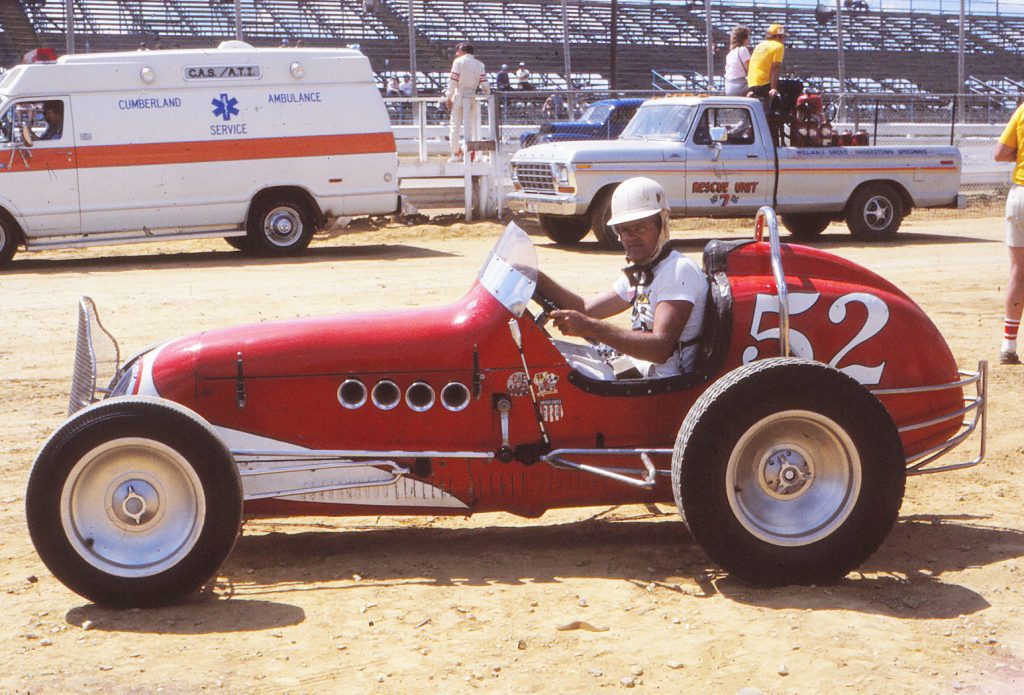
Marty Himes tiptoes the red car around turns three and four of Williams Grove’s half-mile dirt track, not quite hanging the tail out. The flagman has been watching him and Marty has seen the official grasping the black flag like it has “Himes” written all over it. This is the Williams Grove Old-timers Annual Reunion and drivers, in the interest of safety, have been warned against over exuberance. Marty, like a schoolboy testing the principal, is stretching the rules as far is they will go.
Into the main straight, ex-racer Himes can’t resist. The right foot goes down and the red car lets out an Offy whooop that even the dirt remembers. The car hooks up and leaps down the straight, its tall tires seemingly just grazing the dirt track. With Himes in a T-shirt and pudding-pot Cromwell helmet, it’s a 50’s racing poster come to life. The flagman squeezes the black flag and shakes it at Himes, almost but not quite pointing it at him; almost, but not quite ejecting him from the track. Marty backs off for the corner and one doesn’t need to see his face to know that he’s grinning from inside out. The schoolboy wins again and nobody, not even the principal, really loses.
The pack of vintage sprint cars returns to the pits, rumbling and snorting and parting the crowd like an internal combustion Moses. Himes, down at the Harrisburg, Pa., area track from Bay Shore, New York, where he runs the Himes Museum of motor racing nostalgic, hits the fuel shut off and gooses it a couple of times and rolls in with the engine silent.
“That way you clear out the system, you don’t have no bad alcohol in the fuel system,” explains Himes, unbuckling his belts. “If you don’t, the next time you go out it ain’t going to run right.”
What there is to run right is an Offy 220, fed methanol by Hilborn injection and stuffed in a stretched Kurtis-Kraft midget. Californian Frank Kurtis had become famous for building dirt track midgets from the ‘20s to 1948. Another Californian, Danny Hogan, gained fame for stretching them into sprint cars. He did the red car around 1948.
“The purpose for stretching midgets was to meet the minimum Sprint car wheelbase requirement, which was 84in,” Himes says. “A midget was a 72in maximum; minimum was 68in.”
So take a car, make it a foot longer and double its 110cu engine size, and you got a package strong, simple and simple-minded as a bowling ball. The 220 was smaller than the usual-four-sprinters 255 or 270 Offy, but it was a good competitive trade-off of power for agility.
As with all good sprinters, the red car has a tube chassis with an aluminum skin, solid axles front and rear, the original transverse leaf changed over to torsion bars sometime in the late ‘50s. Original 1955 Firestones, 5.50×16 four ply in the front and 8.20×16 six ply rear, are on Hallibrand magnesium wheels.
The only control in the car is the accelerator. There’s an outside handbrake for the four-wheel hydraulic drums. There is no clutch, just and in-and-out dog clutch. Engine design didn’t consider a starter.
“It’s got a switch on the dashboard for two and four-wheel brakes,” notes Himes, reciting the starting routine. While being pushed, “start it by locking your rear brakes, steer with your front wheels.” Then, with the rear tires skidding merrily over the dirt, “get it approximately 25mph and you release the brake handle. But you don’t release the kill button – which is the magneto shut-off – until the oil pressure is up, fuel pressure is up. Then you let the button go. Then you’re in business!”
There is no transmission, only a torque tube and a single speed, but a Hallibrand quick-change rear end allowed ratio changes for different track conditions in four or five minutes. With nothing to shift, there’s no tach, just oil pressure, water temperature and fuel pressure gauges. Those and the magneto shut-off are the dash.
Driver safety consists of a short rollbar. The lap belt was there to keep the driver in on a bumpy track. The Sam Browne belt, running diagonally across the driver’s chest, was there only to fight G-loadings in the turns. Woe to the driver who sprinter went stumble.
Under the driver’s seat is a 16-quart oil tank for the dry sump Offy. The tail section of the car is the fuel tank, holding 16-18 gal and good for about 10 to 12 laps on 5 gallons of fuel on a half-mile track. “Every time you go around, you open your wallet,” smiles Himes.
Himes sprinter has a mechanical fuel pump mounted on the left camshaft – the Offy is double overhead cammed – but that was a later addition. Traditional fuel delivery was by air pressure in the tank, hand pumped on the fly as fuel was used.
Himes notes that the car was built for dirt but with a little stagger can run on asphalt. For dirt tracks, tires are run “square”: equal size side to side. Normal tire pressure is 36 psi “but on a bumpy track like we’re on here today, I had to drop it down to about 15. Which is not good but it helps. On a track like today, you got to change it.”
What hasn’t changed, seemingly from the ‘50s, are Himes and his stretched midget. They’re a matched pair and Himes, with his smile and crew cut right out of a Steve Canyon comic strip, looks the perpetual mischievous kid. Not bad, just always testing the limits, teasing the rules. And you just know that the next time they send the sprinters out Marty Himes will be there, making life difficult for the flagman. But he loves that Offy sound just as much is Himes.

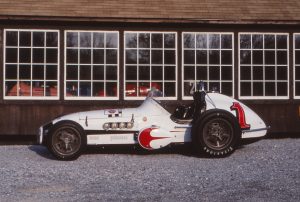
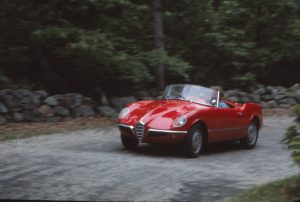
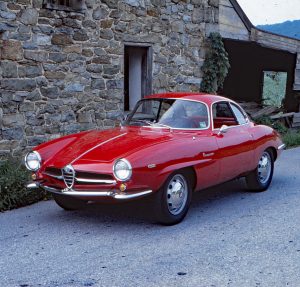
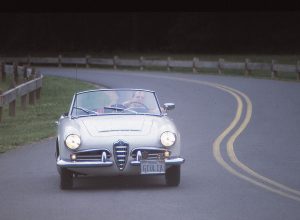

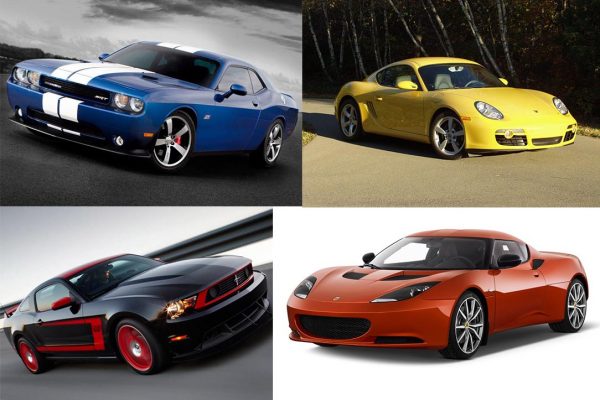
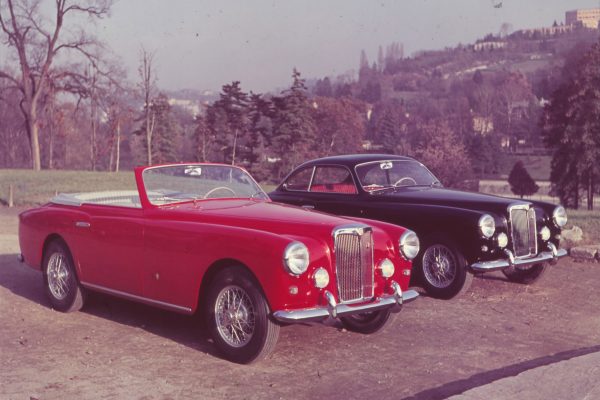
What Do You Think?
You must be logged in to post a comment.